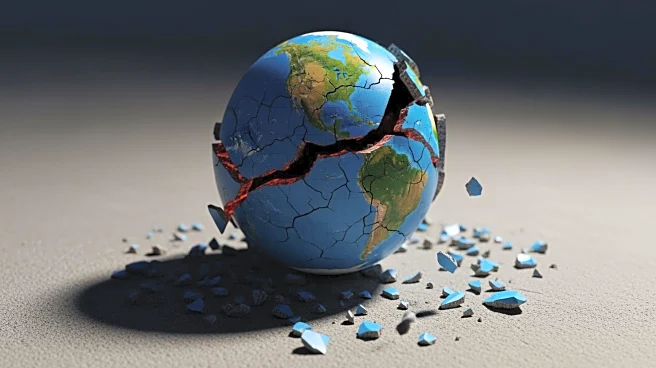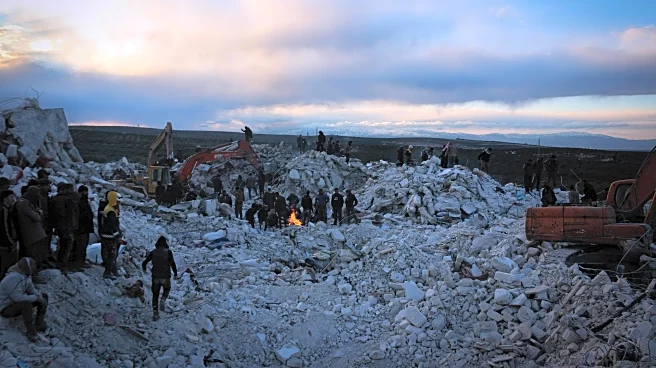What's Happening?
On September 18, 2025, a powerful earthquake with a magnitude of 7.8 struck near the east coast of Russia's Kamchatka region. The U.S. Geological Survey reported that the epicenter was located 127 kilometers east of Petropavlovsk-Kamchatsky, occurring
at 6:58 a.m. local time with a depth of 19.5 kilometers. The Pacific Tsunami Warning System initially issued a tsunami threat but later lifted it. As of the latest reports, there have been no immediate reports of damage or casualties resulting from the earthquake.
Why It's Important?
The earthquake in Russia's Kamchatka region highlights the seismic activity prevalent in the Pacific Ring of Fire, an area known for frequent earthquakes and volcanic eruptions. While the immediate impact appears minimal, the event underscores the importance of monitoring seismic activity and maintaining preparedness for potential natural disasters. The lifting of the tsunami threat is a relief for coastal communities, but the incident serves as a reminder of the unpredictable nature of such geological events. It also emphasizes the role of international monitoring systems like the Pacific Tsunami Warning System in providing timely alerts to mitigate risks.
What's Next?
Following the earthquake, authorities in Russia and international monitoring agencies will likely continue to assess the situation for any delayed impacts or aftershocks. The event may prompt reviews of emergency preparedness and response strategies in the region. Additionally, scientific communities may analyze the earthquake data to better understand the seismic patterns in the area, potentially leading to improved predictive models for future events. Local governments and residents will remain vigilant for any further developments.
Beyond the Headlines
The earthquake's occurrence in the Kamchatka region, a remote area with limited infrastructure, raises questions about the resilience and readiness of local communities to handle such events. It also highlights the broader implications for global seismic monitoring and the importance of international cooperation in disaster response. The event may lead to increased investment in seismic research and technology to enhance early warning systems and improve safety measures for vulnerable regions.













